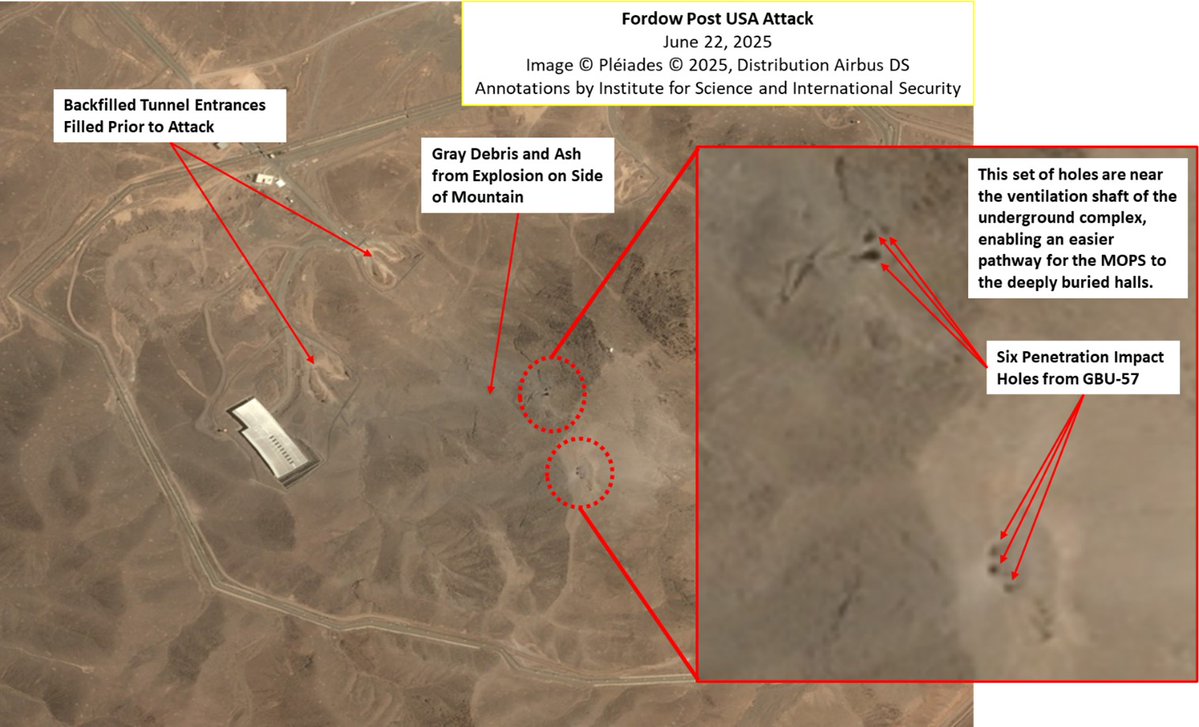
Inst for Science
@thegoodisis
A think tank focused on nuclear nonproliferation. Employing science in pursuit of peace since 1993. contact us: [email protected]
ID: 50311413
http://www.isis-online.org/ 24-06-2009 13:58:24
20,20K Tweet
13,13K Followers
573 Following



IAEA Director General Rafael Mariano Grossi reports possible damage to the main Natanz underground enrichment site too at UNSC meeting: “There is no indication of a physical attack on the underground cascade hall containing part of the Pilot Fuel Enrichment Plant and the main Fuel





In analyzing June 14th imagery on Natanz, I found a small crater above the main hall of the underground enrichment plant (see blowup image below). This corresponds to one of the craters identified by Geoff Brumfiel today that is being filled in (see his image below of area above
























